 |
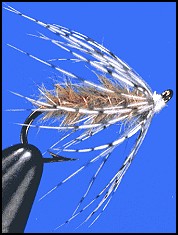 Partridge and Hare's Ear Leisenring Soft-Hackle technique By Allen McGee, Atlanta, Georgia |
|
|
Materials Partridge and Hare's Ear
Thread: Gray silk. Ribbing: Gold wire. Body: Hare's mask fur from position #4 - top of head. Hackle: Gray partridge feather.
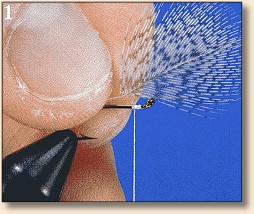 1. Prepare a gray partridge neck feather by stripping the downy base and any barbs on both sides of the feather, down to the longest barbs you want to include on the fly. Then remove two barbs on the side of the feather that will be wrapped closest to the hook shank. This allows the first wrap around the shank to be smooth. The longest barbs left on the feather should be slightly longer than the hook shank.
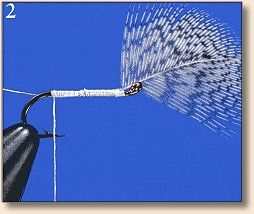 2. Start the thread on the hook then tie in the feather stem about one hook eye behind the hook eye. Wind the thread back to the bend tying in the wire ribbing as you go. If you are using tinsel ribbing wait and tie it in at the hook bend. Cut the stem if necessary so that the stem doesn't extend past the mid point on the shank. Make sure the thread underbody is smooth.
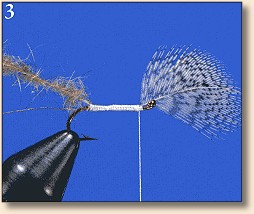 3. At the bend tie in the pre-dubbed loop that was created using the Leisenring dubbing technique. Hold one of the thread ends with hackle pliers to keep it from unraveling as you tie in the dubbing loop. Advance the thread to the point where the feather stem emerges from under the thread wraps near the hook eye.
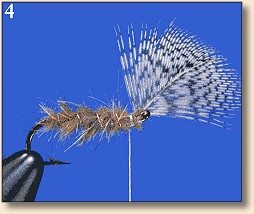 4. Wind the body forward spinning it a little every turn and a half to keep it tight. Take a couple of turns with the thread to tie off the dubbing loop. Then wind the gold wire rib up to the point behind the hackle and tie off with two turns of thread. Trim both the wire rib and the dubbing loop.
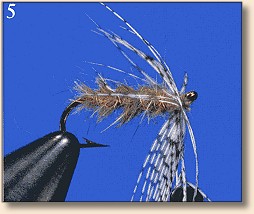 5. Take two wraps with the partridge feather placing the second turn behind the first. Then tie-off the hackle with two turns of thread. Trim the remaining feather tip.
 6. Pass the thread between the hackle and build up a neat thread head.
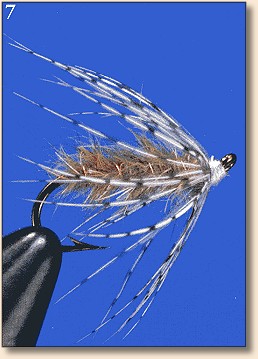 7. Whip finish and trim the thread tag end. ~ Allen
|